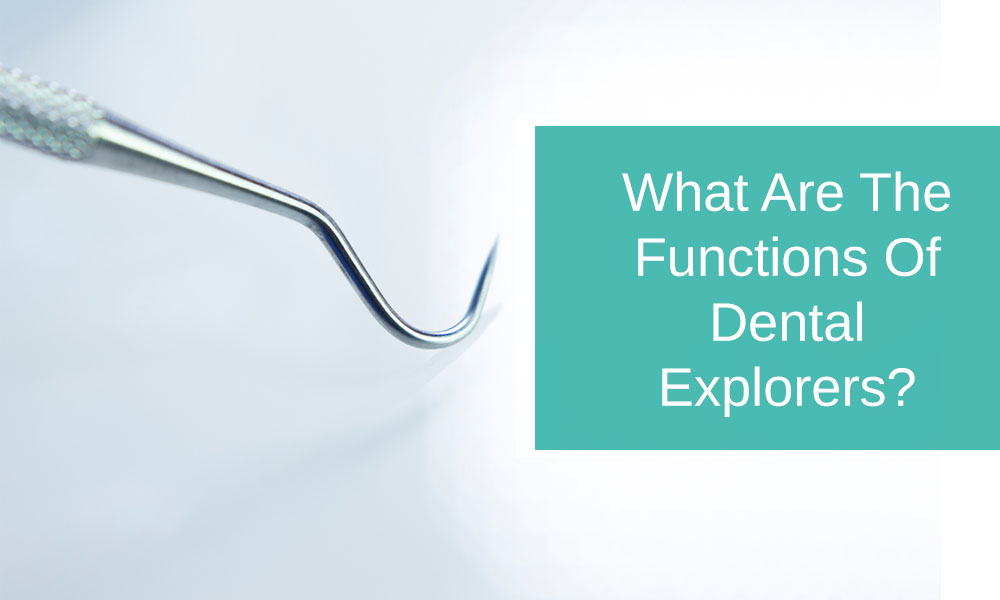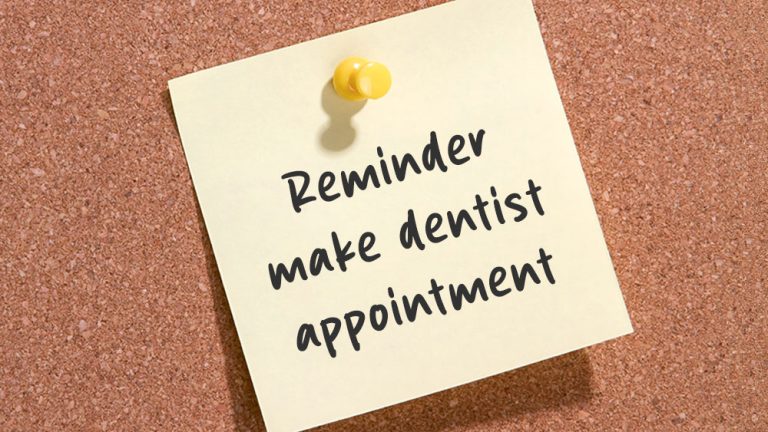
What are the functions of dental explorers?
Dental explorers, those seemingly simple instruments used by dentists, harbor a world of significance in maintaining optimal oral health. We’ll unravel the functions, types, and advancements in dental explorers, shedding light on their role in diagnosis, preventive dentistry, and addressing common challenges.
What is a Dental Explorer?
Definition and Purpose
A dental explorer is more than just a pointy tool – it’s a diagnostic powerhouse. This instrument, comprising a handle and a pointed tip, is designed for the meticulous examination of tooth surfaces. Its primary mission? To uncover irregularities such as cavities, plaque, and defective restorations. Most people actually do not know the names of dentist tools, including the Dental Explorer.
Historical Background
Dental explorers boast a rich history, evolving alongside the progression of dentistry itself. Early dental practitioners employed rudimentary tools for similar purposes, paving the way for the sophisticated instruments we use today. The historical journey of dental explorers reflects the relentless pursuit of precision in dental care.
Evolution of Dental Explorers
From primitive beginnings to modern precision, dental explorers have transformed significantly. Crafted with precision and durability in mind, today’s explorers showcase the dental industry’s commitment to staying at the forefront of technology for enhanced patient care.
Types of Dental Explorers
Design and Structure
Dental explorers aren’t one-size-fits-all; they come in diverse designs catering to specific diagnostic needs:
- Shepard’s Hook Explorer: Curved like a shepherd’s crook, this design excels at exploring fissures and pits, especially in premolars and molars.
- Right Angle Explorer: Sporting a right-angled tip, this type facilitates access to tricky posterior areas, aiding in the detection of caries in hard-to-reach spots.
- Pigtail Explorer: With a coiled or pigtail-shaped tip, this explorer is a go-to for pinpointing irregularities in restorations, ensuring their longevity.
Variations in Tips and Blades
- Sharp Tips: Ideal for detecting early signs of decay.
- Blunt Tips: Suited for exploring restorations and identifying irregularities.
- Textured Tips: Enhance sensitivity for identifying calculus and plaque buildup.
Common Materials Used
Crafted from stainless steel for durability, dental explorers often feature ergonomic handles for a comfortable grip during examinations.
How Does a Dental Explorer Work?
The Science Behind Dental Exploration
Dental explorers function on the principle of tactile sensitivity. Dentists use these instruments to physically feel the tooth surfaces, identifying any irregularities through feedback received from the explorer’s tip. The keen sense of touch allows practitioners to pinpoint areas that may require further examination or treatment.
Detecting Dental Caries and Other Anomalies
One of the primary functions of a dental explorer is to identify dental caries, commonly known as cavities. The sharp or textured tips aid in detecting the softening of enamel or the presence of pits and fissures. Additionally, the explorer helps locate other anomalies such as cracks, defective restorations, or areas with calculus buildup.
Role in Comprehensive Dental Examinations
During routine dental check-ups, dentists use dental explorers systematically to examine each tooth surface. This meticulous examination helps create a comprehensive picture of the patient’s oral health, enabling early intervention and preventive measures.
Variations in Dental Explorer Tips and Blades
Shepard’s Hook Explorer
The Shepard’s Hook Explorer is characterized by its curved tip, resembling the shape of a shepherd’s crook. This design allows for effective exploration of fissures, pits, and other subtle irregularities. Dentists often use this type when examining the occlusal surfaces of teeth, particularly in the premolars and molars.
Right Angle Explorer
Featuring a right-angled tip, the Right Angle Explorer is adept at reaching challenging areas, especially in the posterior regions of the mouth. This design provides enhanced access to surfaces that may be obscured, ensuring a thorough examination of all tooth surfaces. Dentists commonly use this type for detecting caries in areas that are harder to reach with other designs.
Pigtail Explorer
The Pigtail Explorer, with its coiled or pigtail-shaped tip, is particularly useful for identifying irregularities in dental restorations. Its design allows for precise detection of defects or weaknesses in fillings, crowns, or other restorative work. Dentists rely on this explorer to ensure the longevity and integrity of dental restorations.
Exploring Different Tips for Different Applications
Dentists may switch between different types of dental explorers during an examination based on the specific needs of each tooth and surface. The versatility in design and tip variations ensures a comprehensive evaluation of the entire dentition.
The Role of Dental Explorers in Diagnosis
Detecting Early Signs of Decay
One of the primary functions of dental explorers is the identification of early signs of tooth decay. The sharp tips of the explorer can gently probe the tooth surfaces, detecting areas where the enamel may have started to soften. Early detection is important for initiating preventive measures and preserving tooth structure.
Locating Calculus and Plaque Buildup
Dental explorers are invaluable in locating and assessing the extent of calculus and plaque buildup. The textured tips can detect the presence of these deposits in areas that may be visually challenging to access. Identifying and addressing these issues promptly is essential for preventing gum disease and maintaining optimal oral health.
Identifying Defective Restorations
In addition to natural tooth surfaces, dental explorers play a key role in evaluating dental restorations. Dentists use these instruments to detect any defects or weaknesses in fillings, crowns, or other restorative work. This proactive approach ensures the longevity and effectiveness of dental restorations.
Proper Technique for Dental Exploration
Importance of Gentle Handling
Dental exploration requires a delicate touch. Dentists must use a light, controlled force when maneuvering the explorer across tooth surfaces. Applying excessive pressure can lead to false positives, potentially damaging healthy tooth structure and causing unnecessary discomfort for the patient.
Tips for Minimizing Patient Discomfort
Communication is key when using dental explorers. Dentists should inform patients about the procedure, emphasizing that any discomfort experienced is temporary. Additionally, maintaining open communication allows patients to express any sensitivity, enabling the dentist to adjust their technique accordingly.
Ensuring Accurate Results
Precision is key during dental exploration. Dentists must systematically examine each tooth surface, ensuring no area is overlooked. The systematic approach, combined with a keen sense of touch, enables the identification of even subtle irregularities. This thorough examination contributes to accurate diagnoses and effective treatment planning.
Advancements in Dental Explorer Technology
Modern Materials and Manufacturing
Contemporary dental explorers are crafted from high-quality stainless steel, offering durability and resistance to corrosion. The handles are often made from ergonomic materials, ensuring a comfortable grip for practitioners. These advances in materials contribute to the longevity and effectiveness of dental explorers.
Ergonomic Designs for Enhanced Comfort
In recent years, there has been a significant emphasis on creating ergonomic designs for dental explorers. Comfortable handles and balanced designs reduce hand fatigue during prolonged use, enhancing the overall experience for both the dentist and the patient. Ergonomic considerations are integral to modern dental instrument design.
Digital Innovations in Dental Exploration
The digital era has introduced innovative technologies to dental exploration. Digital imaging and diagnostic tools complement traditional dental explorers, providing a more comprehensive view of oral health. Integration of digital data enhances the accuracy of diagnoses, enabling practitioners to make informed decisions about patient care.
Dental Explorers in Preventive Dentistry
Early Intervention and Prevention
Dental explorers play a major role in preventive dentistry by enabling early intervention. Detecting dental issues in their nascent stages allows for conservative treatments, preventing the progression of conditions that could lead to more extensive and invasive procedures. Regular dental check-ups with the use of dental explorers contribute to long-term oral health.
Educating Patients on Self-Examination
Dentists can empower patients to take an active role in their oral health. By educating individuals on how to perform basic self-examinations using dental explorers, practitioners encourage proactive monitoring of dental health between appointments. This collaborative approach enhances patient engagement and contributes to overall preventive care.
Incorporating Dental Explorers into Routine Check-ups
Routine dental check-ups involve the systematic use of dental explorers to assess the condition of each tooth. This proactive approach allows dentists to identify and address potential issues before they escalate, fostering a preventive mindset among patients. The integration of dental explorers into routine check-ups is fundamental to maintaining optimal oral health.
Challenges and Controversies Surrounding Dental Explorers
Overdiagnosis Concerns
One challenge associated with dental explorers is the potential for overdiagnosis. The sensitivity of these instruments may lead to the detection of minor irregularities that do not necessarily require immediate intervention. Dentists must exercise clinical judgment to distinguish between harmless variations and issues warranting treatment, preventing unnecessary procedures.
Patient Anxiety and Perception
The use of dental explorers can sometimes induce anxiety in patients, especially those with dental phobias. Understanding and addressing patient concerns through clear communication and a gentle approach is essential. Dentists should create a comfortable environment, explaining the purpose of dental exploration to alleviate any apprehension.
Addressing Misconceptions
Misconceptions about dental explorers may arise, such as the belief that their use always signifies a severe dental issue. Dental professionals must proactively educate patients about the diagnostic nature of explorers, emphasizing their role in preventive dentistry. Clear communication helps dispel myths and fosters a collaborative relationship between dentists and patients.
Maintenance and Sterilization of Dental Explorers
Ensuring Hygiene Standards
Maintaining proper hygiene standards is paramount when it comes to dental explorers. After each use, these instruments should be thoroughly cleaned to remove any debris or biological material. This ensures that subsequent uses are not compromised by residual substances.
Sterilization Best Practices
Sterilization is a critical step in preventing cross-contamination. Dental explorers, being delicate instruments, should undergo sterilization using methods approved by dental associations and health organizations. Autoclaving is a common method that ensures effective sterilization without compromising the integrity of the instruments.
Regular Inspection and Replacement
Regular inspection of dental explorers is essential for identifying any signs of wear or damage. Damaged explorers can compromise the accuracy of examinations and potentially harm patients. Dentists should adhere to recommended inspection schedules and replace worn or damaged explorers promptly.
Frequently Asked Questions
How often should dental explorers be used?
Dental explorers are typically used during routine dental check-ups, which are recommended at least twice a year. However, their frequency of use may vary based on individual patient needs and specific treatment plans.
Are there any risks associated with dental exploration?
When used appropriately, dental explorers pose minimal risks. However, improper handling or excessive force can potentially cause discomfort to the patient or damage healthy tooth structure. Dentists are trained to use these instruments with precision and care.
Can patients perform dental exploration at home?
While patients can perform basic oral hygiene practices at home, dental exploration requires professional training and a nuanced understanding of oral health. Encouraging regular dental check-ups is the most effective way to ensure comprehensive examinations using dental explorers.
Why do dentists use mirrors in procedures?
Dentists use mirrors in procedures for enhanced visualization within the oral cavity. Mirrors provide a clear line of sight to areas that are challenging to access directly, aiding in examinations, diagnostics, and various treatments by allowing dentists to see hidden surfaces of teeth and assess overall oral health more effectively. The reflective surface of mirrors is a crucial tool for precision and accuracy in dental procedures.
Key Takeaways
In the world of dentistry, dental explorers are unsung heroes, diligently working to unveil the secrets hidden within our smiles. From their historical journey to their critical role in preventive care, we’ve explored the multifaceted nature of these instruments. As we navigate the challenges and advancements in dental exploration, one thing remains clear – the functions of dental explorers are paramount in safeguarding our oral health.



